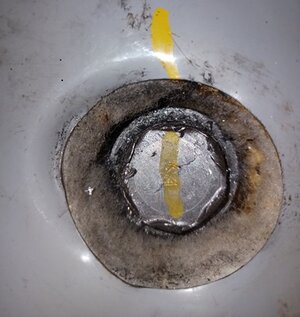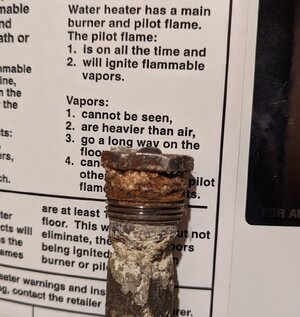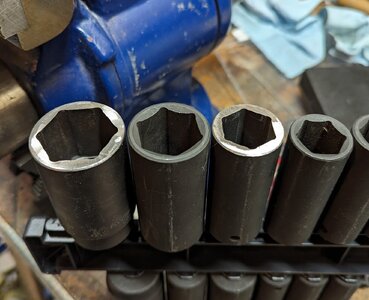bigJake
Well-Known Member
OK guys, this post has NOTHING to do with jet skis, but there are alot of expert machinists and mechanics on here that might have some suggestions. I have a rounded off bolt that won't budge.
I was attempting to change a water heater anode rod. The head of the anode rod is a 1 1/16" bolt and sits recessed below the top of the water heater. The only 1 1/16" socket I had was a 12 point socket, so I started with that which was a big msitake as it instantly started to round off the bolt. So I went to Lowes and bought a 6 point deep well 1 1/16" impact socket. I started with a breaker bar on the 6 point socket but the socket was just lifting off the bolt (and rounding more) so I switched to putting a 24" pipe wrench on the socket and tapping it with a sledge since any leverage was just moving the whole hot water tank aross the floor. Bolt still wouldn't budge with the 24" wrench, so I sprayed it with PB Blaster and orderd a corded impact driver - I found on YouTube that this was the way to go. Well, the impact driver came today and as seen in the attached photo, it only rounded off the bolt even more. The bolt is so rounded that I was now able to tap on a 1" socket (but again I only had a 12 point) so it only spun. I assume I'm dealing with cheap Chineese steel. So I'm looking for ideas. Do I have any hope of removing this anode rod? I dont know if I now went out and bought a 6 point 1", if I could tap that onto the bolt or not. I'm a bit concerned with tapping too hard and damaging the lining of the tank. My other thought is, can I JB Weld something to the top of the bolt that I can put a socket on? At worst case I could sacrifice the 12 point 1 1/16" socket and JB Weld it to the bolt. You guys that do major mechanical work would probably weld something onto the bolt but I don't have a welder. The tank is 6 years old but apparently these rods corrode inside and basically become welded in place. The corosion "weld" may be stronger than the steel the bolt is made of, so even if I JB Weld a socket onto the bolt, it may just round off again. Ideas/Suggestions.
I was attempting to change a water heater anode rod. The head of the anode rod is a 1 1/16" bolt and sits recessed below the top of the water heater. The only 1 1/16" socket I had was a 12 point socket, so I started with that which was a big msitake as it instantly started to round off the bolt. So I went to Lowes and bought a 6 point deep well 1 1/16" impact socket. I started with a breaker bar on the 6 point socket but the socket was just lifting off the bolt (and rounding more) so I switched to putting a 24" pipe wrench on the socket and tapping it with a sledge since any leverage was just moving the whole hot water tank aross the floor. Bolt still wouldn't budge with the 24" wrench, so I sprayed it with PB Blaster and orderd a corded impact driver - I found on YouTube that this was the way to go. Well, the impact driver came today and as seen in the attached photo, it only rounded off the bolt even more. The bolt is so rounded that I was now able to tap on a 1" socket (but again I only had a 12 point) so it only spun. I assume I'm dealing with cheap Chineese steel. So I'm looking for ideas. Do I have any hope of removing this anode rod? I dont know if I now went out and bought a 6 point 1", if I could tap that onto the bolt or not. I'm a bit concerned with tapping too hard and damaging the lining of the tank. My other thought is, can I JB Weld something to the top of the bolt that I can put a socket on? At worst case I could sacrifice the 12 point 1 1/16" socket and JB Weld it to the bolt. You guys that do major mechanical work would probably weld something onto the bolt but I don't have a welder. The tank is 6 years old but apparently these rods corrode inside and basically become welded in place. The corosion "weld" may be stronger than the steel the bolt is made of, so even if I JB Weld a socket onto the bolt, it may just round off again. Ideas/Suggestions.






